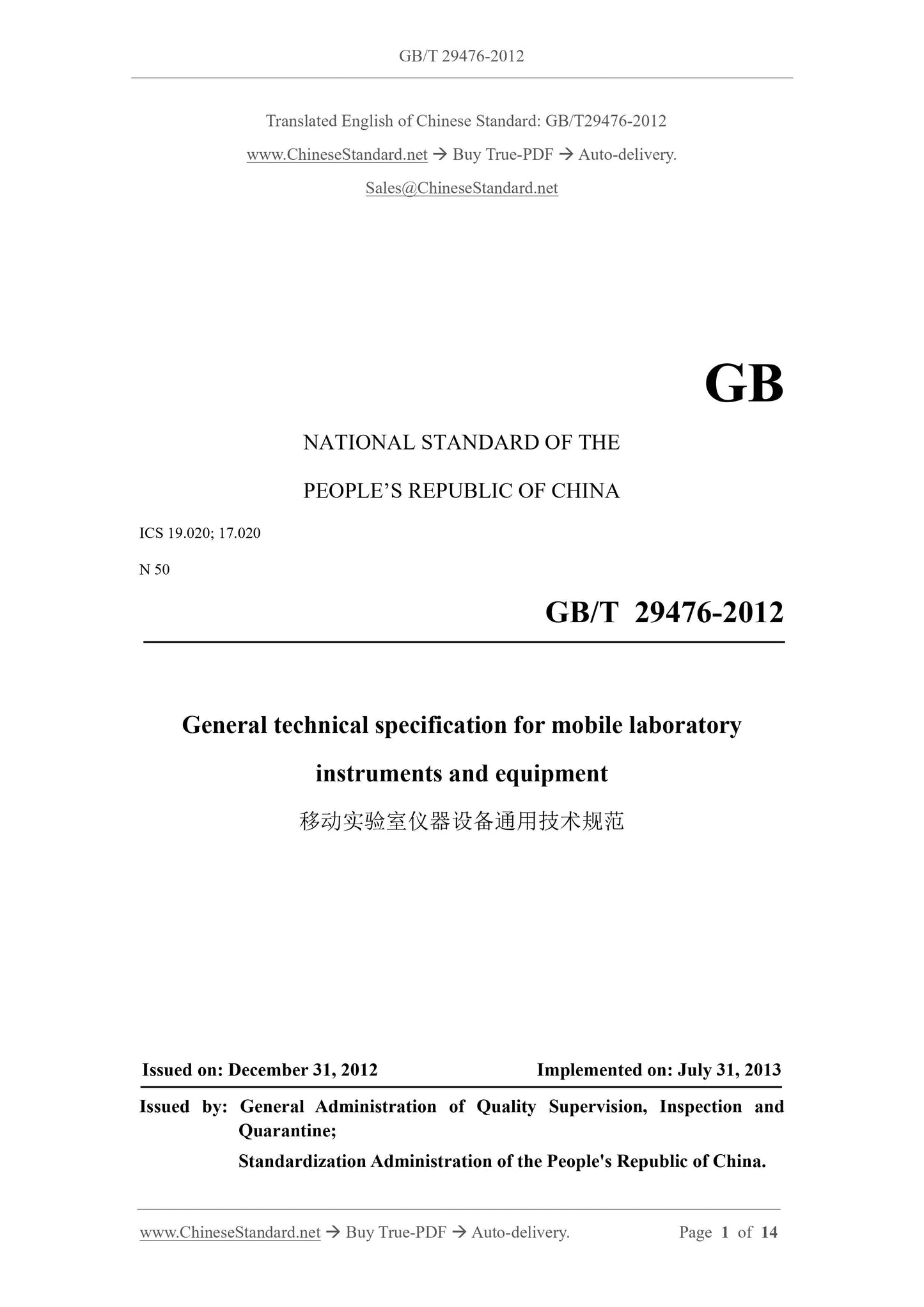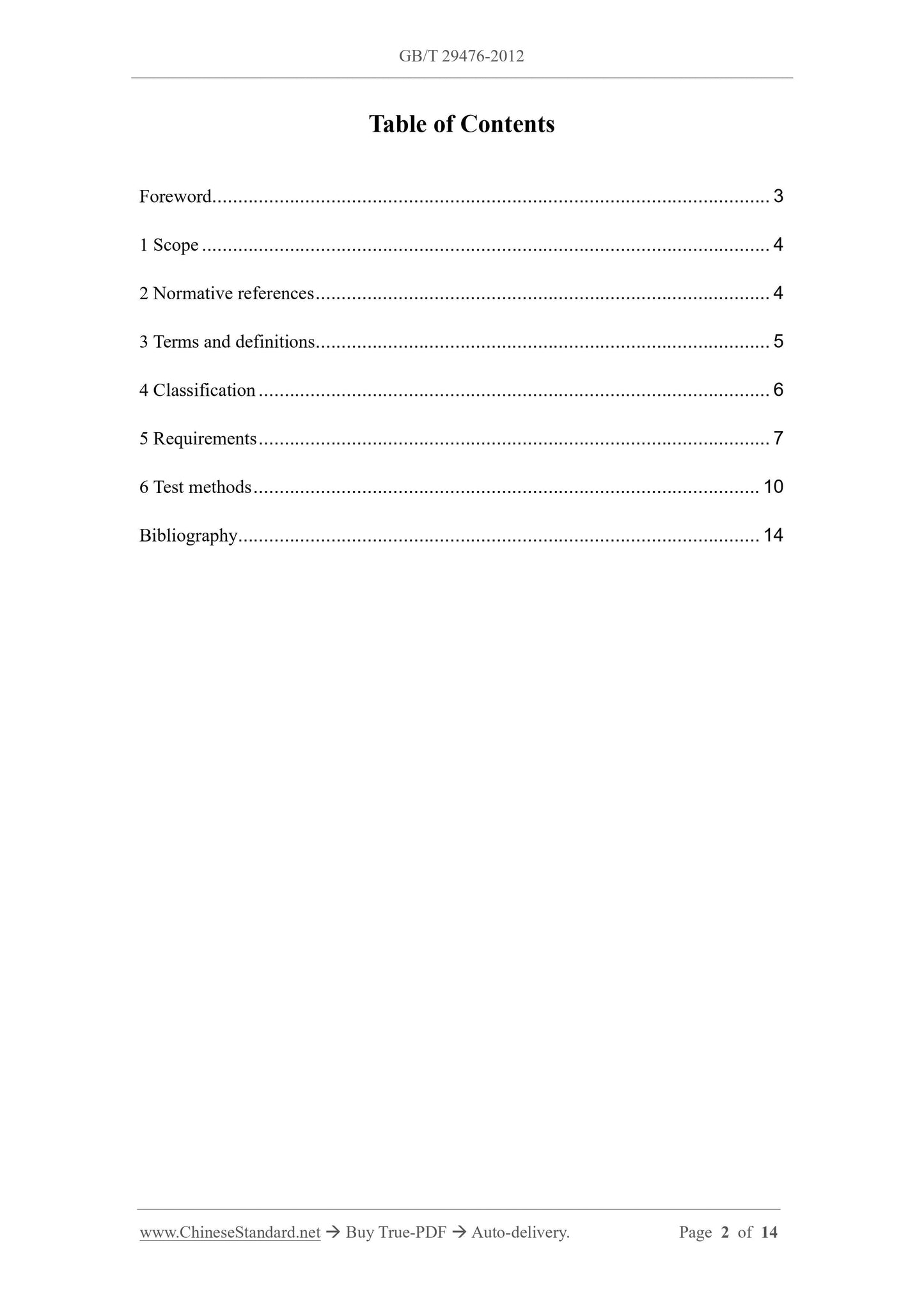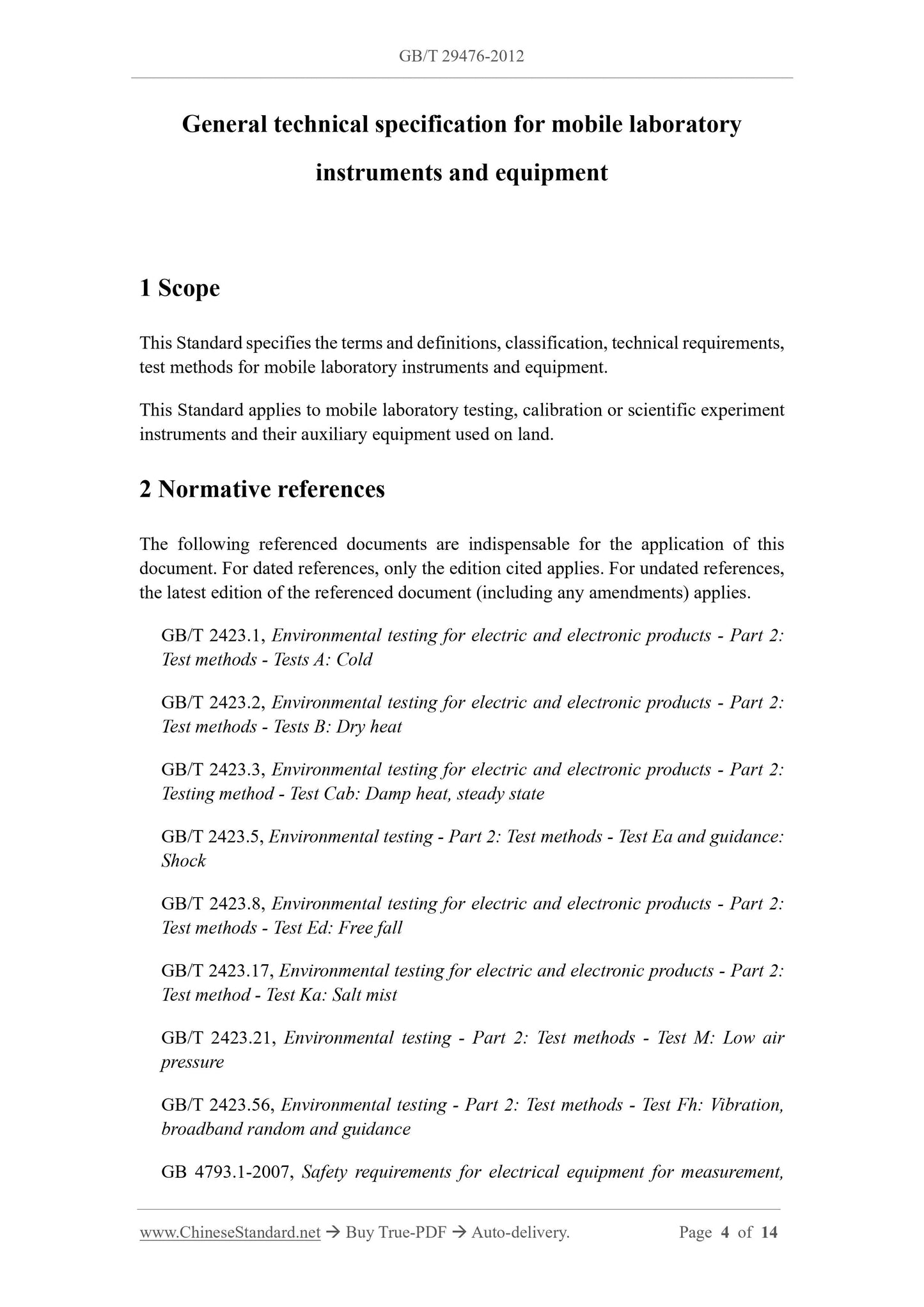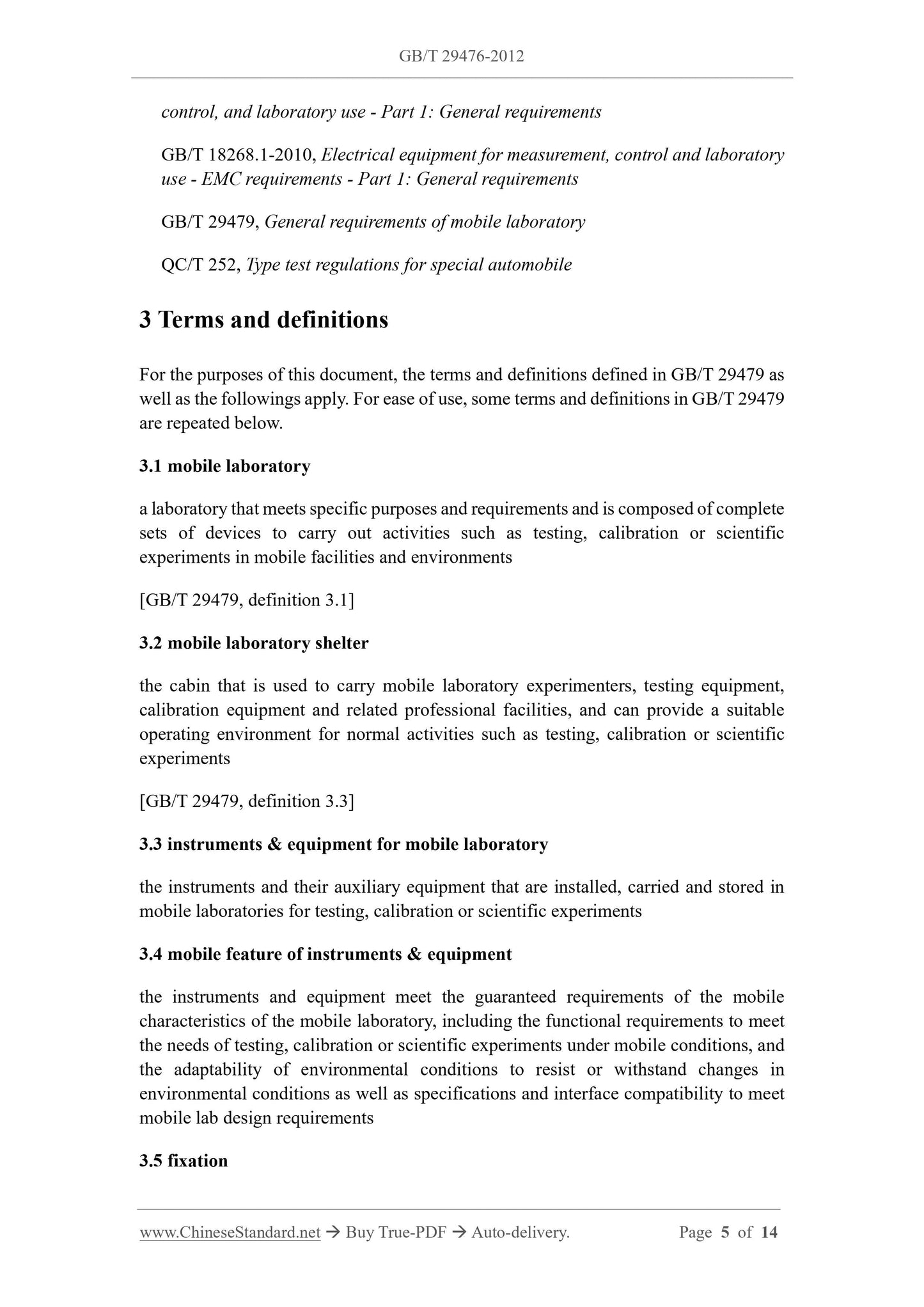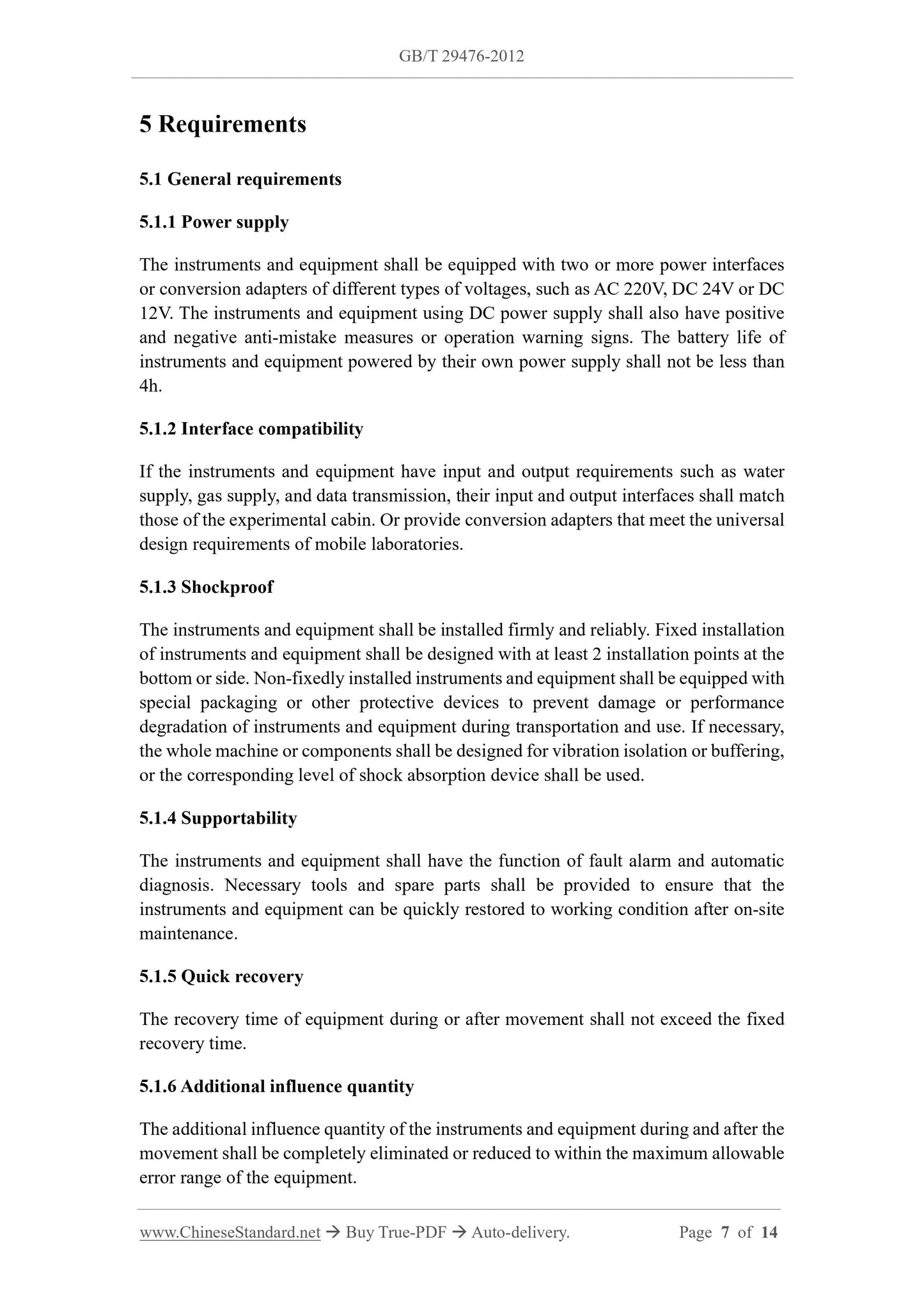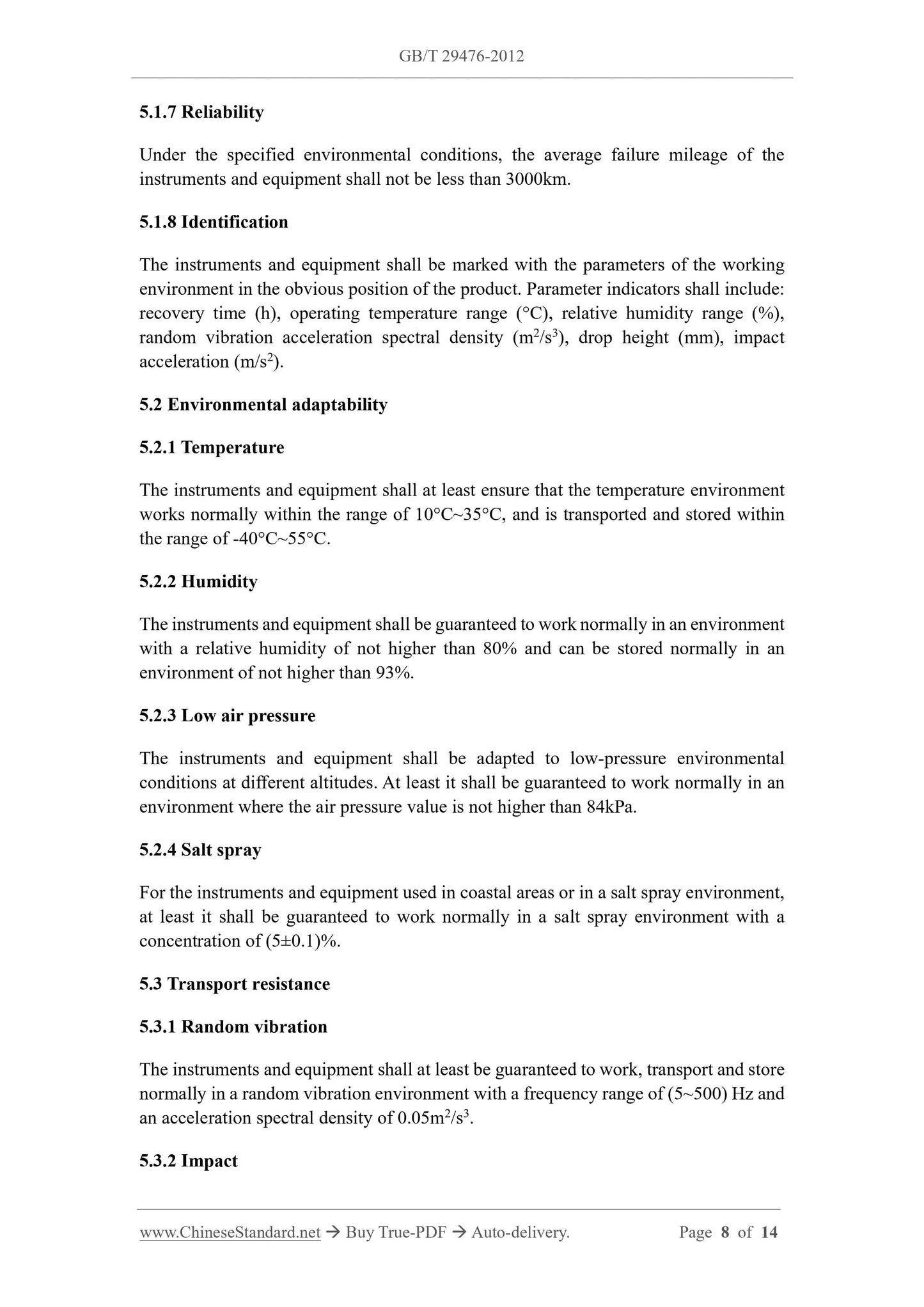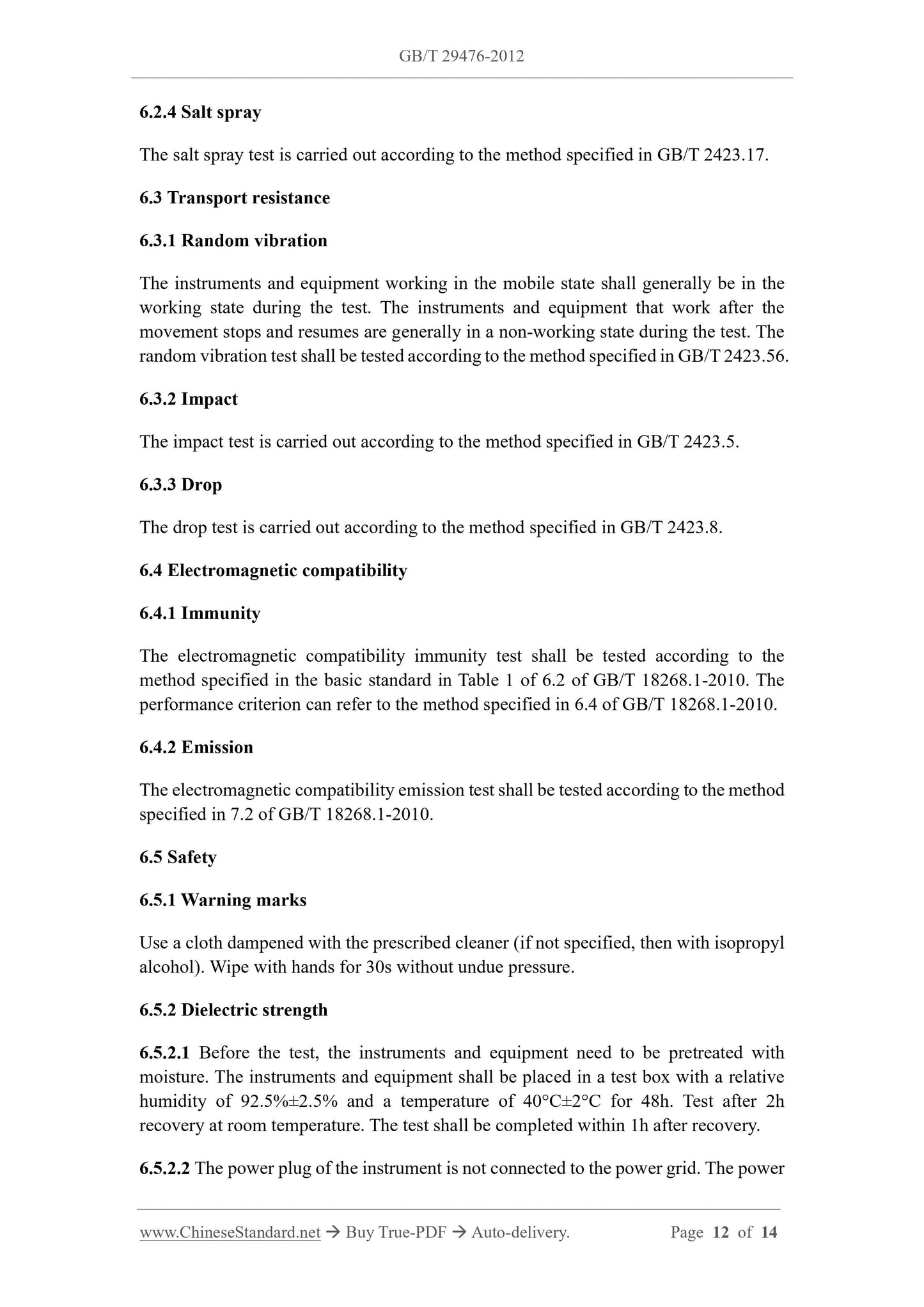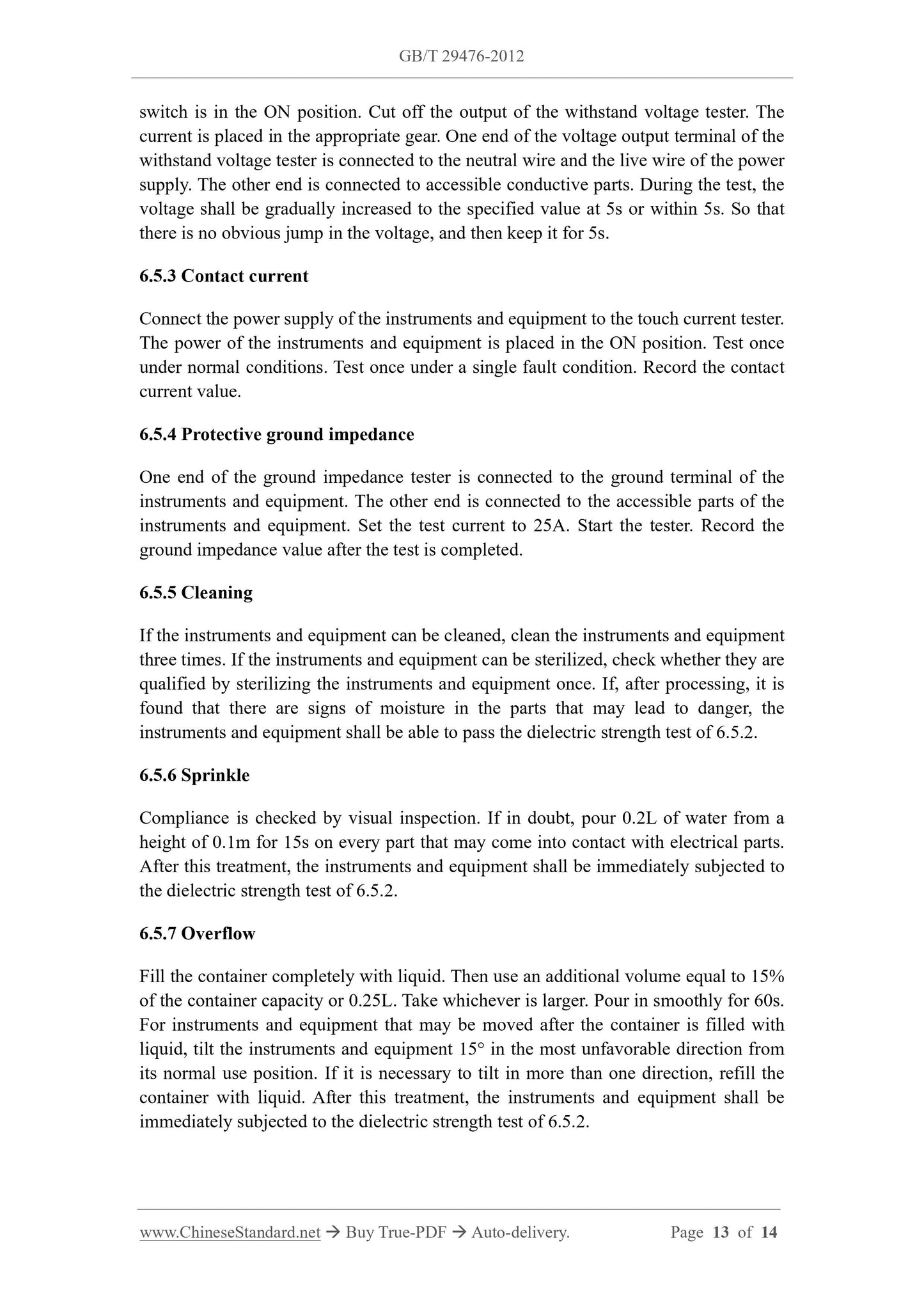1
/
of
8
www.ChineseStandard.us -- Field Test Asia Pte. Ltd.
GB/T 29476-2012 English PDF (GB/T29476-2012)
GB/T 29476-2012 English PDF (GB/T29476-2012)
Regular price
$220.00
Regular price
Sale price
$220.00
Unit price
/
per
Shipping calculated at checkout.
Couldn't load pickup availability
GB/T 29476-2012: General technical specification for mobile laboratory instruments and equipment
Delivery: 9 seconds. Download (and Email) true-PDF + Invoice.Get Quotation: Click GB/T 29476-2012 (Self-service in 1-minute)
Newer / historical versions: GB/T 29476-2012
Preview True-PDF
Scope
This Standard specifies the terms and definitions, classification, technical requirements,test methods for mobile laboratory instruments and equipment.
This Standard applies to mobile laboratory testing, calibration or scientific experiment
instruments and their auxiliary equipment used on land.
Basic Data
| Standard ID | GB/T 29476-2012 (GB/T29476-2012) |
| Description (Translated English) | General technical specification for mobile laboratory instruments and equipment |
| Sector / Industry | National Standard (Recommended) |
| Classification of Chinese Standard | N50 |
| Classification of International Standard | 19.020; 17.020 |
| Word Count Estimation | 12,133 |
| Quoted Standard | GB/T 2423.1; GB/T 2423.2; GB/T 2423.3; GB/T 2423.5; GB/T 2423.8; GB/T 2423.17; GB/T 2423.21; GB/T 2423.56; GB 4793.1-2007; GB/T 18268.1- 2010; GB/T 29479; QC/T 252 |
| Regulation (derived from) | National Standards Bulletin 2012 No. 42 |
| Issuing agency(ies) | General Administration of Quality Supervision, Inspection and Quarantine of the People's Republic of China, Standardization Administration of the People's Republic of China |
| Summary | This standard specifies the mobile laboratory equipment terminology and definitions, classification, technical requirements, test methods. This standard applies to land- use mobile laboratory testing, calibration or scientific experimentation equipment an |
Share
